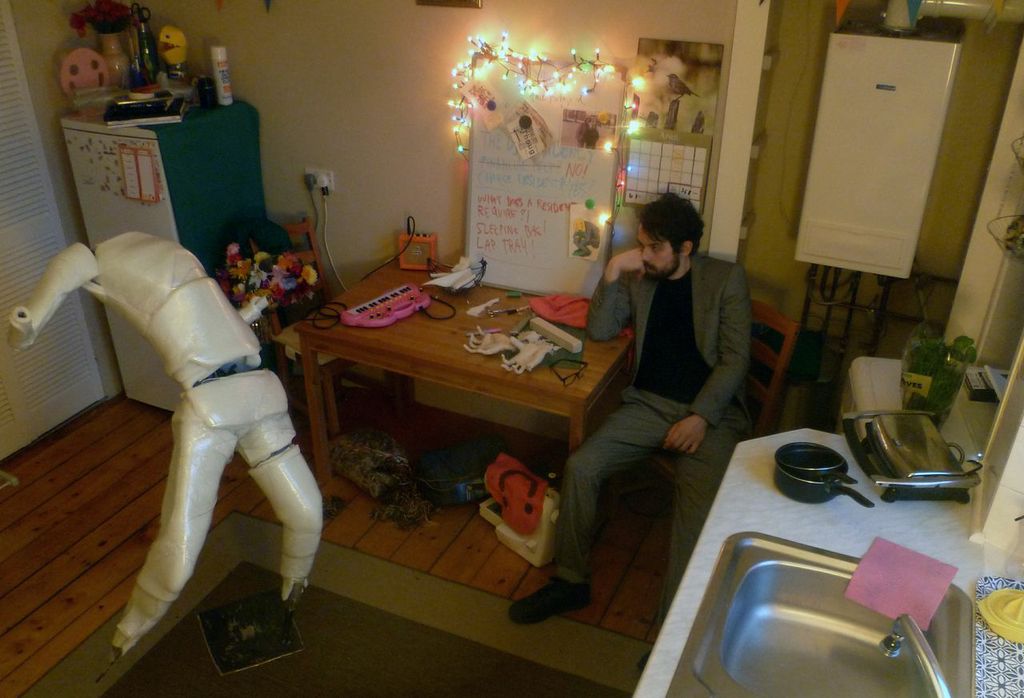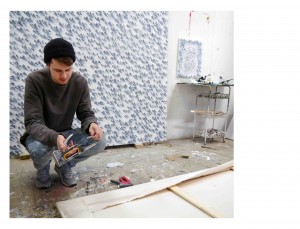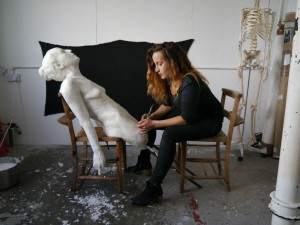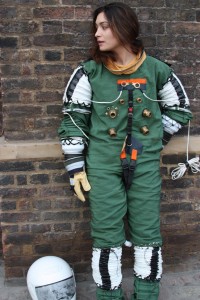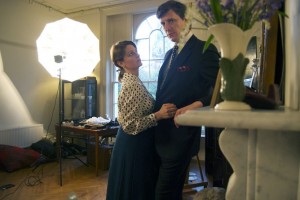Over the next few weeks we will be featuring interviews and Q & A’s with the shortlisted artists from the prestigious Catlin Art Prize 2014 up first is: Dennis J. Reinmüller from Edinburgh College of Art
1. How do you feel about being shortlisted for the Catlin Prize?
Getting a message that tells you that someone out there thinks you’re pretty good at what you do, would like to see more of it, and puts work and money towards you achieving that is pretty amazing by any standard. I know these kind of messages are very rare, so I’m grateful.
I’m also really looking forward to what the other artists will do – I think it’ll be a great show.
2. What work will you be producing over the next year?
I always make shows rather than single pieces, and there are 3 shows I would love to put on over the next year. One a more traditional drawing show, the other a mixture of performance and sculpture and the final one is the wildcard in the bunch – I am enjoying working on at least one show that could potentially end my career. I can’t say too much about that one yet.
3. How would you describe your work?
I think there’s something accessibly desperate about my work: a mixture of excessive self-importance and a strong sense of tragedy – I try to make a point with my shows, which I can then evaluate and see if it tells me something I didn’t know about the circumstances I live in, alternatively, if it makes me laugh, then that’s pretty good as well.
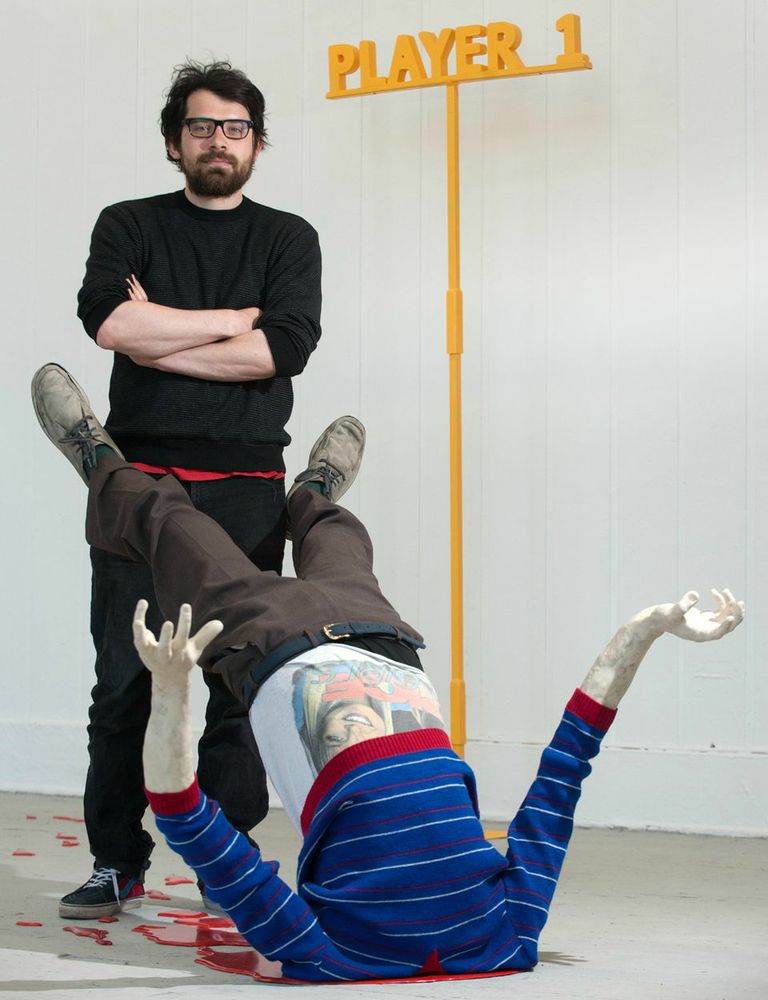
4. What materials do you work with and why?
Although I graduated from a sculpture course, I don’t have a specific material fetish – I probably have to mention though that for a time I was ‘that plasticine and toy horses’ guy in my college.
I try to use whatever material suits the piece best. As long as I have a reason for using something, everything is fair game. If you want to put an aquarium into something, and a stuffed Golden Retriever seems like the logical answer, go for that.
5. What inspires you?
I’m currently really liking the 70s and 80s LA performance scene, and the way they tried to make sense of their environment, wedged in between Downtown poverty and Beverly Hills glamour.
It does remind me of Glasgow sometimes, although I’m still looking for Glasgow’s Beverly Hills.
6. Who inspires you?
Beagles & Ramsay, Glasgow based artists, are a great source of inspiration, with lots of ideas you should steal. Otherwise people I work with: Debbie Moody, Fiona Anderson, Kieran Curran – it’s always a good idea to have people around you who create a bit of parallax in your life, otherwise you just might end up in a self-referential reality tunnel. I mean, who likes constant self-perpetuating affirmation? I like it, but only half the week.
7. Can you describe your studio space?
I have an amazing studio space in the East End of Glasgow, which exactly overlaps spatially with my flat’s kitchen. It is also home to the Dennis J. Reinmüller Residency (found at djr-residency.org), for which I invite interested parties to spend 3 days at my flat in a sleeping bag and with a laptray as a studio space. The resident has to then make portraits of me, which I claim as my own at the end of the residency.
So yeah, my studio is a hive of activity. If I’m not currently building a figure in there or set up a green-screen set, someone might make falafel wraps, or my washing might hang out to dry, or a resident is displaying his/her portraits of me on the gallery/kitchen walls.
8. What were the most important things you learnt at Art school?
Best thing you’ll ever be taught at any art school is to be okay with and learn from failure. Depending on your financial background there is also a lesson in negotiating (i.e. not accepting) limitations. And there is, of course, the classic that never gets old: ‘if you don’t do it, nobody will’.
My personal advice: Make shows! It’s always the most enjoyable part. Shows, shows, shows. Exhaust yourself mentally and financially on making shows, be desperate and be angry.
9. How do you define success?
Success means simply to make everyone else feel less successful around you. I try to not subscribe to those kind of relationships.
10. Why do you make art?
I switched on culturally at the start of the 90s in a recently united Germany. Being an outsider/slacker/loser was a valid position back then, as careers were regarded as hollow promises that would just make you into slightly more washed out copies of your parents.
Making art, especially if you came from a poorer background, was the anti-careerist best choice – so I started participating in poetry readings, and made comics.
For various reasons I ended up in Scotland and was accepted to Edinburgh College of Art, thinking I’ll study illustration. That quickly changed after being introduced to the sculpture department – the possibility of making objects, creating situations and planning performances that can rival contemporary realities blew my mind. I felt liberated, and enjoyed this freedom of making tremendously.
Now, in 2014, when everyone is an enterprise in Neoliberalism, being an artist functions in the same career terms as any other job – I still believe, though, that art can show you how to dream differently and open a space for thinking about alternatives that can indeed rival our current realities.
About The Catlin Art Prize
The Catlin Art Prize gives talented young artists who have recently graduated from UK art schools the opportunity to showcase their work professionally and win a significant monetary award towards their future development.
Graduating artists from around the UK are visited and assessed by Art Catlin curator, Justin Hammond, and 40 are invited to feature in The Catlin Guide, an exclusive publication showcasing the most promising new artists in the country.
From the Guide, a small number of artists are selected as finalists for the Prize and are invited to demonstrate their progress by presenting a new body of work at the Catlin Art Prize exhibition, held 12 months on from graduation.
Finalist selection is based on the standard of their work and their potential to make a significant mark in the art world over the course of their early careers.
During the exhibition an independent panel of judges including Turner Prize winner Mark Wallinger will select a winner who will receive the £5,000 prize. A visitor vote is also held, allowing the general public to vote for their favourite artist via the website and at the exhibition. The winner of which will receive £2,000.
From the 2014 Guide seven artists have been invited to demonstrate their progress by presenting a new body of work at the Catlin Art Prize exhibition, held 2nd -24th May 2014 More Details: www.artcatlin.com
